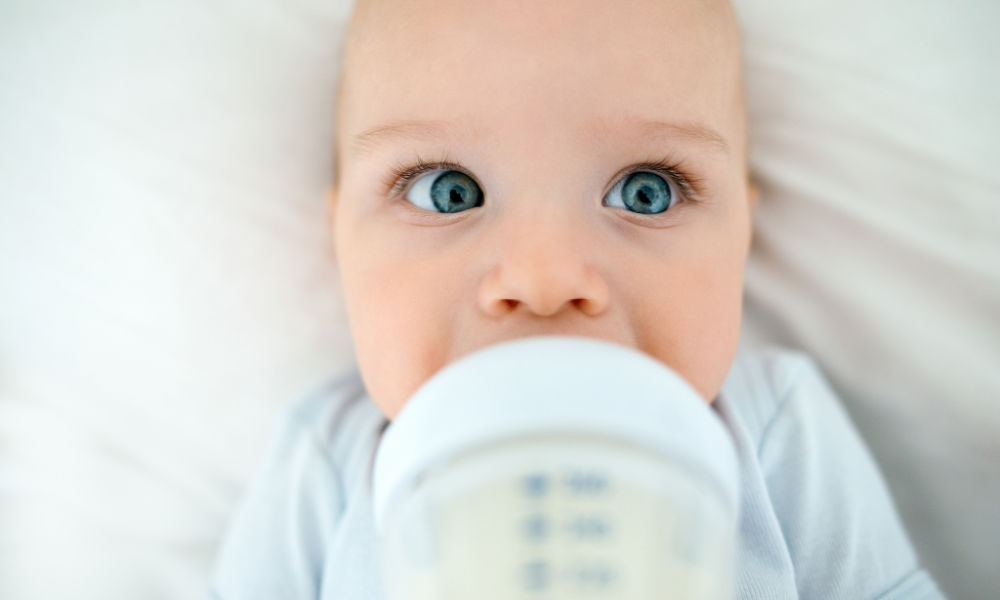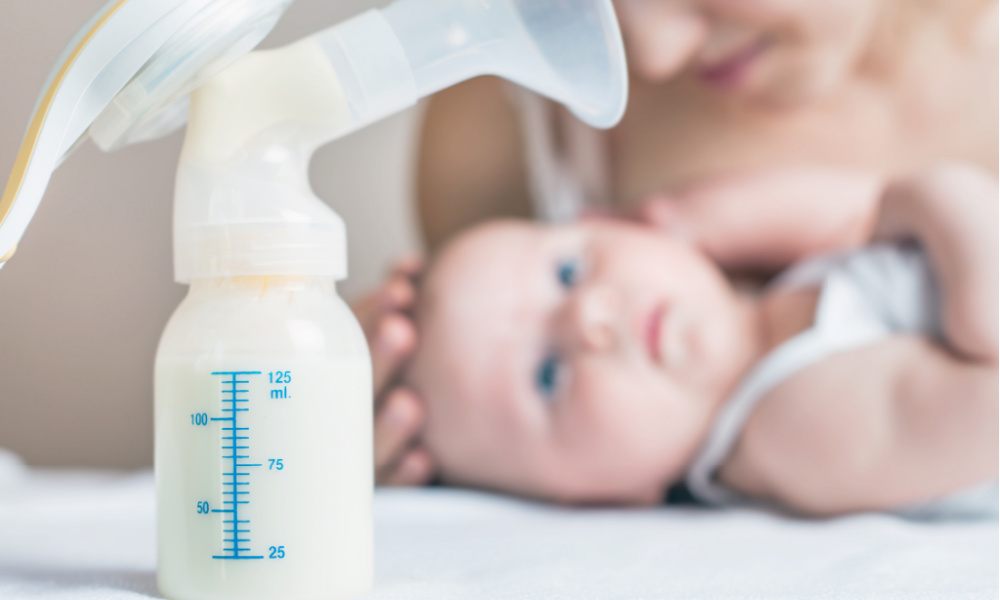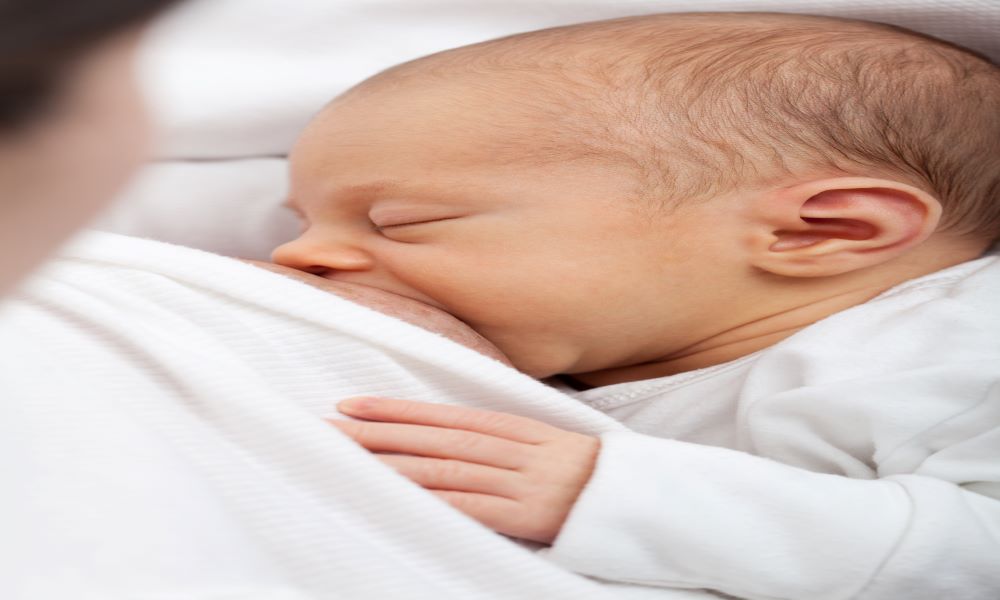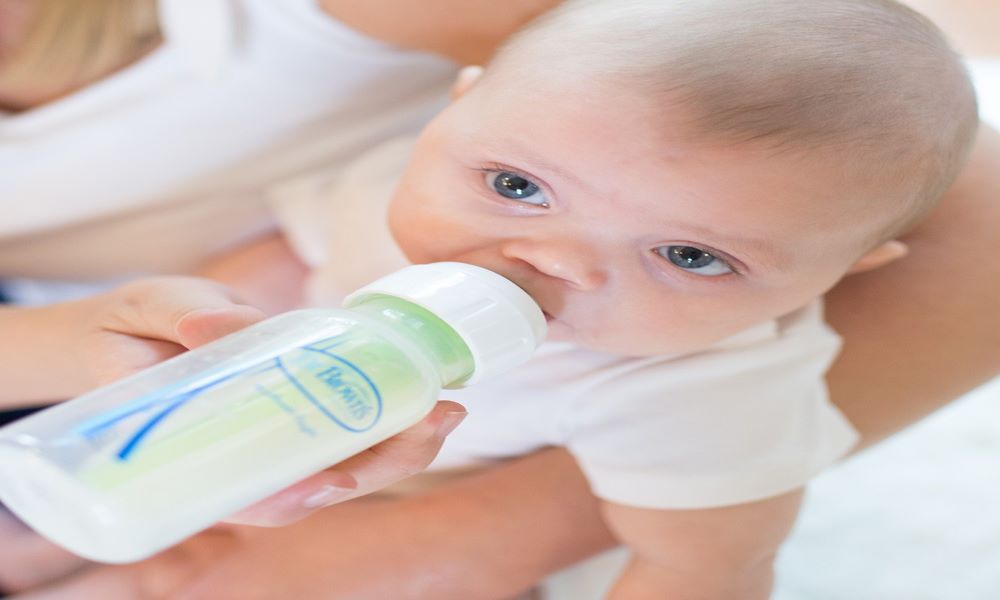Is There Lactose In Breast Milk ? Lactose Intolerance In Babies
Lactose is a sugar found in breastmilk as well as in formula milk. The lactose in breastmilk is in natural form, and if the baby is unable to produce enough enzymes to digest the lactose, it causes lactose intolerance in him/her.
Lactose deficiency is becoming an increasing issue day by day. It becomes difficult for mothers to take care of their children, especially if they don’t know what is troubling them. Mothers need to know the signs and symptoms of lactose intolerance in babies.
In this article, We will tell you Is There Lactose In Breast Milk ? What lactose intolerance in infants is, the types of lactose intolerance, what are its signs and symptoms, how it can be diagnosed, and how to avoid the overdose of lactose in babies.
What is lactose intolerance in babies?
Lactose a sugar found in milk and milk products. It is present in the milk of all mammals. It is also produced in breast milk. The lactose formed in the breasts has nothing to do with the diet of a mother. Lactose is broken down by the lactase enzyme present in the small intestine where most of the food is absorbed.
Lactose is broken down into more straightforward carbohydrates; glucose and galactose. These are then absorbed in the body. The deficiency of lactase enzyme leads to lactose intolerance in babies. They are unable to digest and absorb the lactose present in the milk. The undigested lactose passes down the large intestine, where bacteria break it down and produces acids and gases.
Types of lactose intolerance in babies
Some babies are born with lactose intolerance due to metabolic disorders, while others have a temporary inability to produce lactase. There are two types of lactose intolerance in babies;
- Primary lactose intolerance
- Secondary lactose intolerance
TOP 10 BEST FORMULAS FOR SUPPLEMENTING BREASTFED BABIES
Primary Lactose Intolerance
Primary lactose intolerance, also known as true lactose intolerance, is a rare genetic condition in which the baby’s body cannot produce enough lactase. True lactose intolerance is diagnosed after a few days of birth as the baby starts to show obvious and severe symptoms like vomiting, diarrhea, jaundice, and failure to thrive. This condition is severe, and the baby is required to have a special diet recommended by a pediatrician soon after birth.
Secondary Lactose Intolerance
Secondary lactose intolerance in infants is also known as lactose overdose. It can appear at any age and not just in infants. The lactase enzyme is produced in the tips of the microscopic folds of the intestine.
Any damage such as infection, allergy, or inflammation in the gut can cause lactose overdose. It is a temporary reaction and heals as the gut gets back to its normal functioning. Sometimes food allergies and intolerances also cause lactose overdose in babies. There might be some element present in the mother’s diet which the infant is intolerant to, by removing it from the mother’s diet eventually heals the baby’s gut.
Signs and Symptoms of Lactose Intolerance
The typical symptom of lactose intolerant babies is related to stomach irritability and fussiness. The lactose intolerance baby symptoms in a baby depend on how much amount of lactose is consumed. The more the lactose more severe, the symptoms will be.
The most common symptoms of lactose intolerance are:
- Pain and swelling in the tummy
- Failure to settle at feeding times, coming on and off the breast
- Failure to gain weight
- Diarrhea
- Bulky, frothy, and watery feces
- Nappy rash
- Passing wind and crying when passing feces
- Nausea
- Irritability
- The baby appears to be always hungry.
Dairy Allergy vs. Lactose Intolerance
People often confuse milk allergy, also known as dairy allergy, with lactose intolerance thinking that they are the same, but this is not the case.
Lactose intolerance involves the digestive system. For people who have this condition, their bodies do not make an enzyme; lactase. The deficiency of the enzyme does not break down the lactose, which is sugar in milk. Instead, it travels in the colon, where bacteria break it down and causes bloating and gas, abdominal cramps, diarrhea, nausea, and sometimes vomiting.
However, dairy intolerance in babies involves the immune system. Suppose a person is allergic to dairy items. In that case, the body reacts to the protein present in the cow’s milk by producing substances that cause allergic symptoms like rash, hives, swelling in the lips and face, and tightness throat, and trouble swallowing anything. The reaction can be mild to severe, and it is more common in young children than in adults.
When To Pump If Breastfeeding Every 2 Hours? Complete Guide For New Moms
How do you know if your baby is lactose intolerant?
If you are unsure and ask, “Is my baby lactose intolerant” on and off, it is recommended to visit a pediatrician. Sometimes babies have allergies to different food items such as dairy that causes blotting, which is also a sign of lactose intolerance. The pediatrician takes the medical and family history of allergies. It is essential to give all the details. It helps in getting to the root cause of the baby’s fussiness.
- Lactose intolerance is a rare condition, so doctors initially refer the patients to an allergist who runs a protein test on the baby to see if the newborn shows lactose intolerance symptoms. If the signs are not of allergy, then further tests are done to get a clear picture.
- In some cases, a hydrogen bath test is taken in which the baby breaths into a container. The breaths were taken before and after the infant drinks a portion that contains a set amount of lactose. If a small amount of hydrogen is detected, that means your child can digest lactose, but an increase in hydrogen levels means that the baby is positive for lactose intolerance.
- Babies who are unable to take hydrogen tests properly undergo another test in which acidity in stools is checked. Acidic stool means low pH, which indicates that the baby is lactose intolerant.
- If the signs and symptoms are continuous, then the baby is referred to a pediatric gastroenterologist (GI) for further evaluation. If the symptoms, the doctor performs an endoscopy to measure lactase levels directly from the intestine.
How Is Lactose Intolerance Treated?
The baby’s lactose intolerance can be treated, and it depends on the amount of lactose consumed and the severity of the symptoms. In some cases, children with lactose intolerance can have small amounts of dairy products without having symptoms.
- To help alleviate symptoms if/when your child consumes food that contains, your pediatrician may recommend an over-the-counter lactase enzyme supplement.
- If the symptoms of lactose intolerance in infants are severe, and you are asked to remove all the lactose from the diet, then your pediatrician may refer your child to a registered dietitian. It is harmful to remove dairy from the diet altogether, as it is a good source of calcium and vitamin D, which babies need in their initial years. A registered dietitian can suggest other foods to provide those nutrients and may suggest vitamin supplements.







2 Replies to “Is There Lactose In Breast Milk ? Lactose Intolerance In Babies”